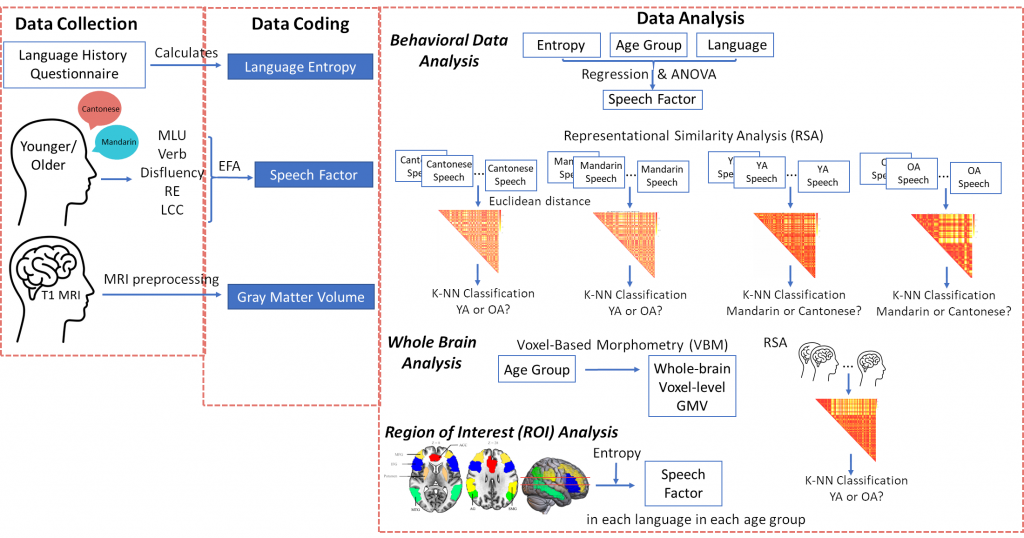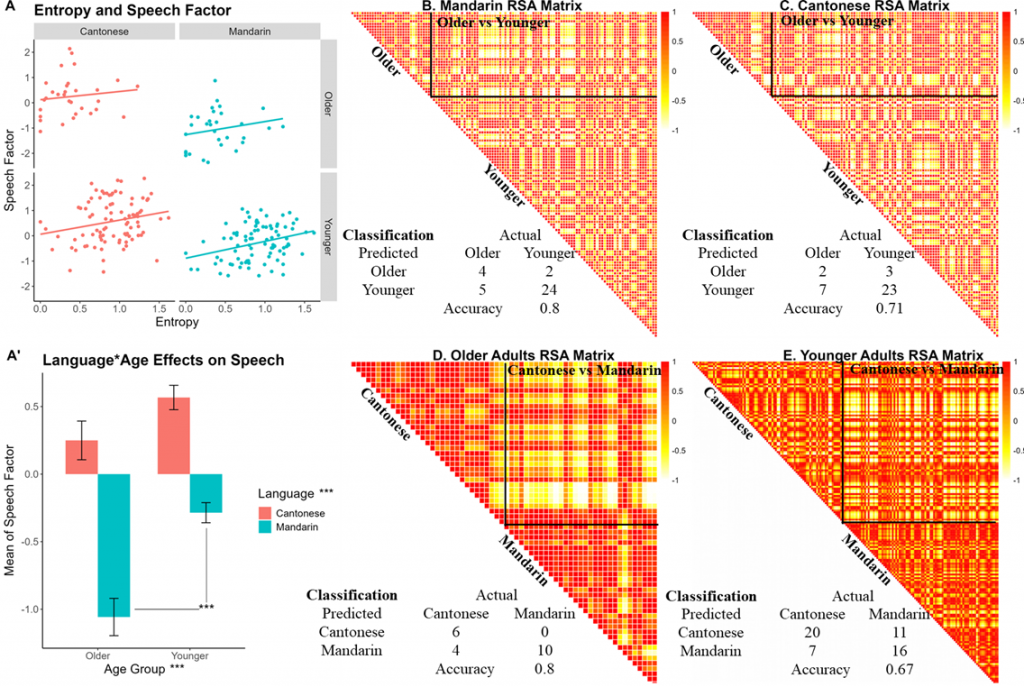A research team led by Professor Haoyun Zhang has made significant advances in understanding the intricate relationship between multilingual experience, aging, brain structure, and language performance. Their work lays the foundation for future investigations into the deeper neural mechanisms that underlie multilingual speech production. The study was published in the prestigious journal NeuroImage (5-year Impact Factor = 6.1, JCR Q1).
Speech production is a highly complex process that requires coordinated activation across multiple brain regions. As individuals age, structural and functional changes occur in the brain, potentially altering the relationship between speech performance and neural substrates. However, the original nature of these associations, how they evolve with age, and what factors may modulate them remain largely understudied. Moreover, it is unclear how these dynamics may differ between native and non-native language use—another critical question addressed in this study.
To explore these issues, Professor Zhang’s team recruited 89 younger and 31 older Cantonese–Mandarin bilinguals and collected both T1-weighted structural MRI and speech data (see Figure 1 for procedure). An exploratory factor analysis of various speech measures identified a unified speech factor reflecting overall speech performance. Regression analysis revealed a positive association between language entropy (a measure of language experience) and the speech factor, suggesting that diverse language usage may enhance speech production. Further interaction effects between language and age group on the speech factor were also observed. These findings were validated through representational similarity analysis (RSA; see Figure 2).

Figure 1: Procedural figure summarizing data collection, coding and analysis steps.

Figure 2: Behavioral results and RSA.
The team further applied a generalized additive mixed model to examine the relationships among gray matter volume (GMV) in language-related regions, speech factor scores, and language entropy. The analysis revealed that the right middle temporal gyrus (MTG), right middle frontal gyrus (MFG), left putamen, and left supramarginal gyrus (SMG) significantly contributed to speech performance in older adults when speaking their native language (Figure 3). Notably, language entropy dynamically modulated the relationship between GMV in the putamen and speech performance, with the left putamen associated with native (Cantonese) speech and the right putamen with non-native (Mandarin) speech.

Figure 3: Effects of ROI GMV and language entropy on Speech factor in older adults
These findings highlight the complex interplay between age, multilingualism, and brain structure, offering new insights into the neural mechanisms supporting multilingual speech production.
Original article link: https://doi.org/10.1016/j.neuroimage.2025.121149
Professor Haoyun Zhang from the Centre for Cognitive and Brain Sciences (CCBS) at the University of Macau is the corresponding author. PhD student Hanxiang Yu from CCBS is the first author. Other contributors include PhD student Keyi Kang, undergraduate student Yushen Zhou from Zhang’s lab, and Professor Christos Pliatsikas from the University of Reading. This work was supported by the Science and Technology Development Fund of the Macao SAR (FDCT, 0153/2022/A), the National Natural Science Foundation of China (32200845), and the Start-up Research Grant (SRG2022-00003-ICI) and Multi-Year Research Grant (MYRG2022-00148-ICI) from the University of Macau.


